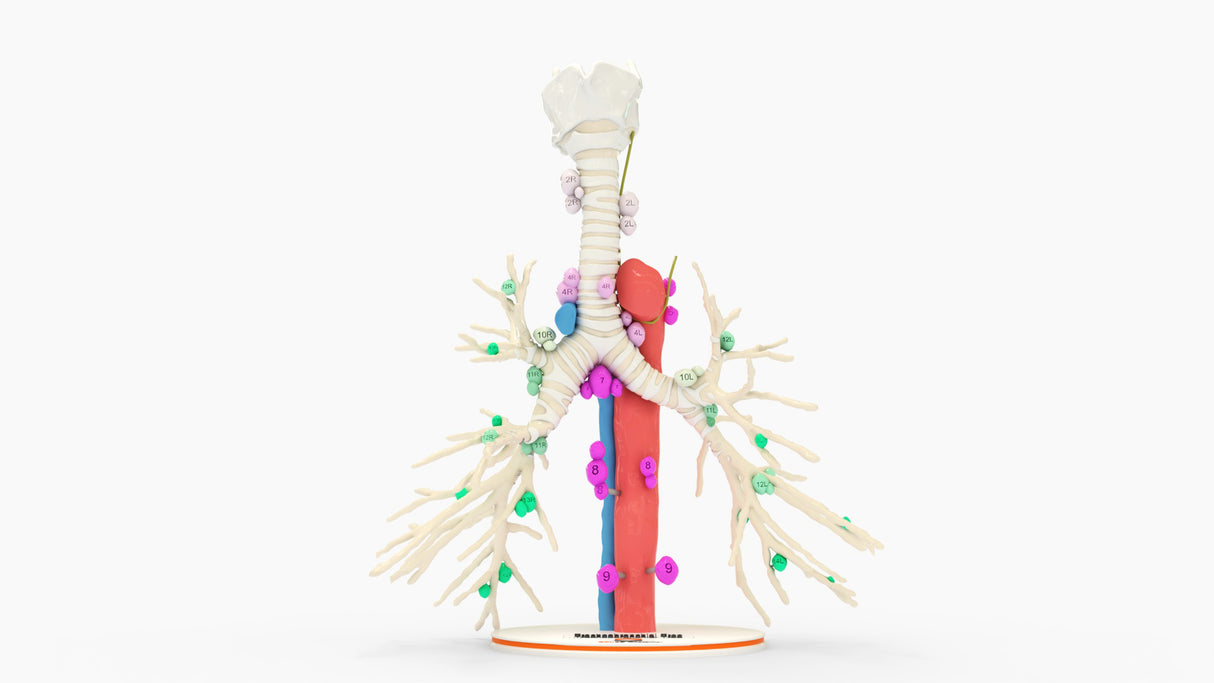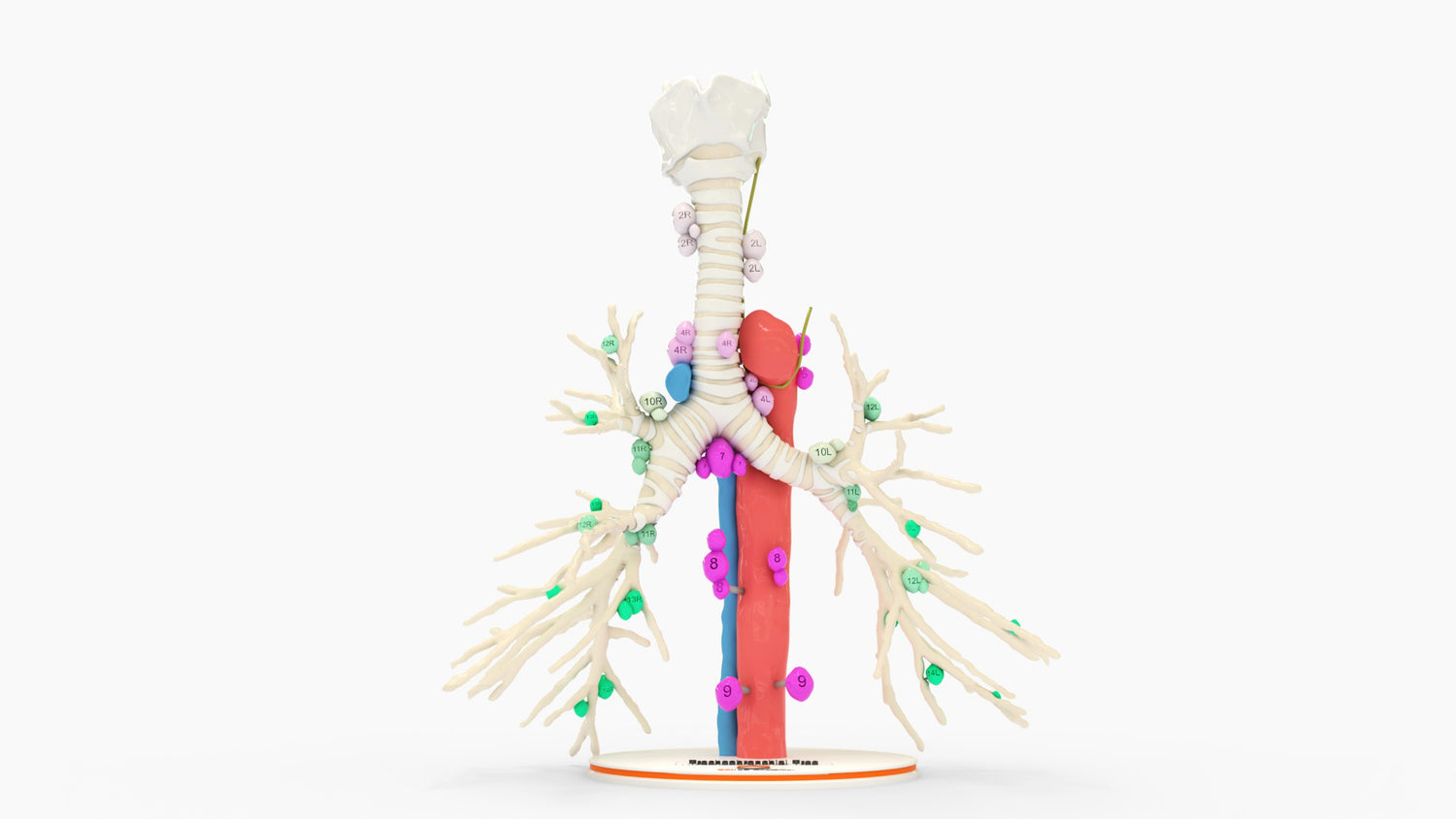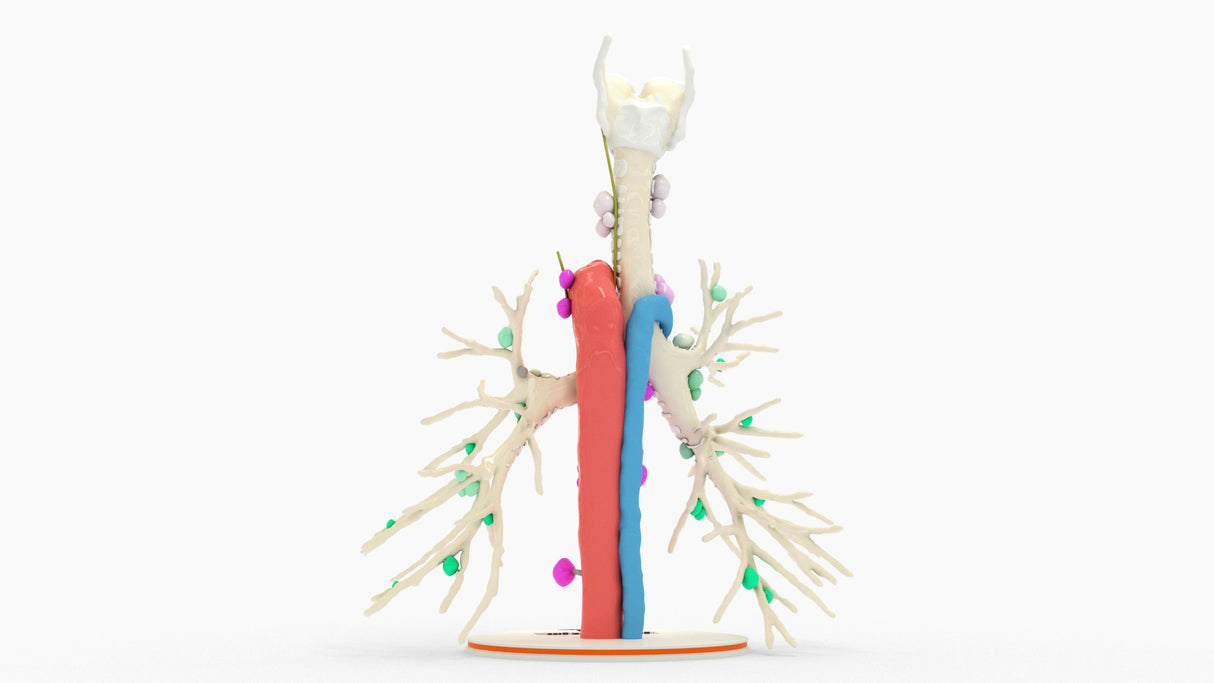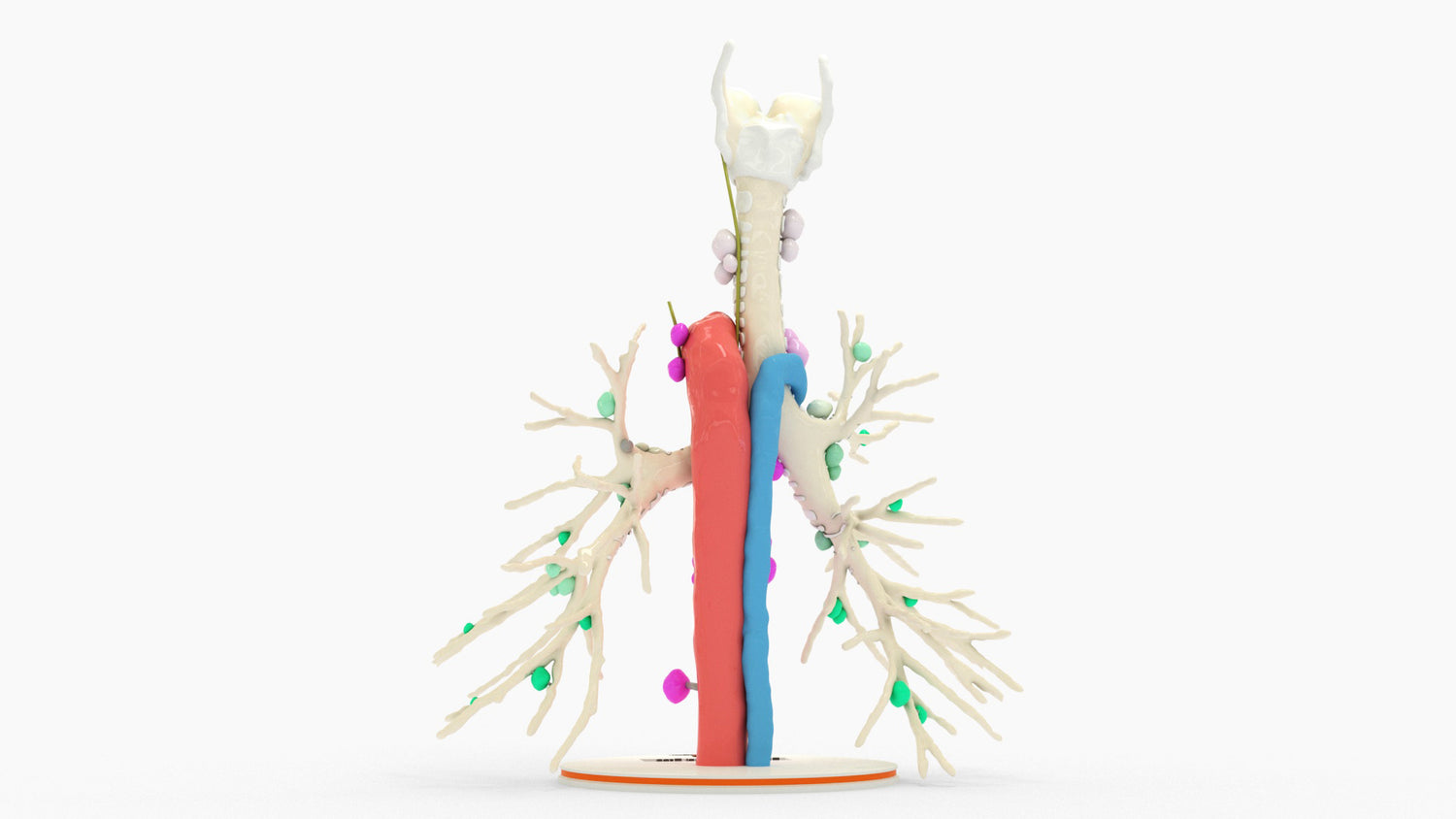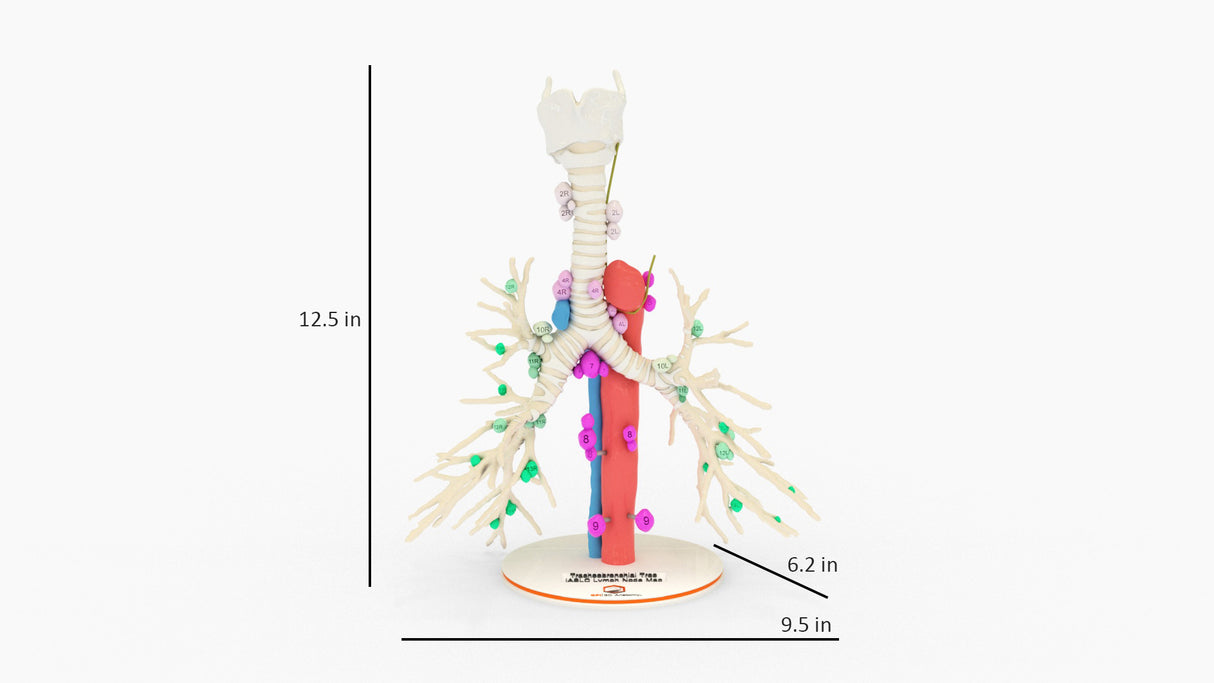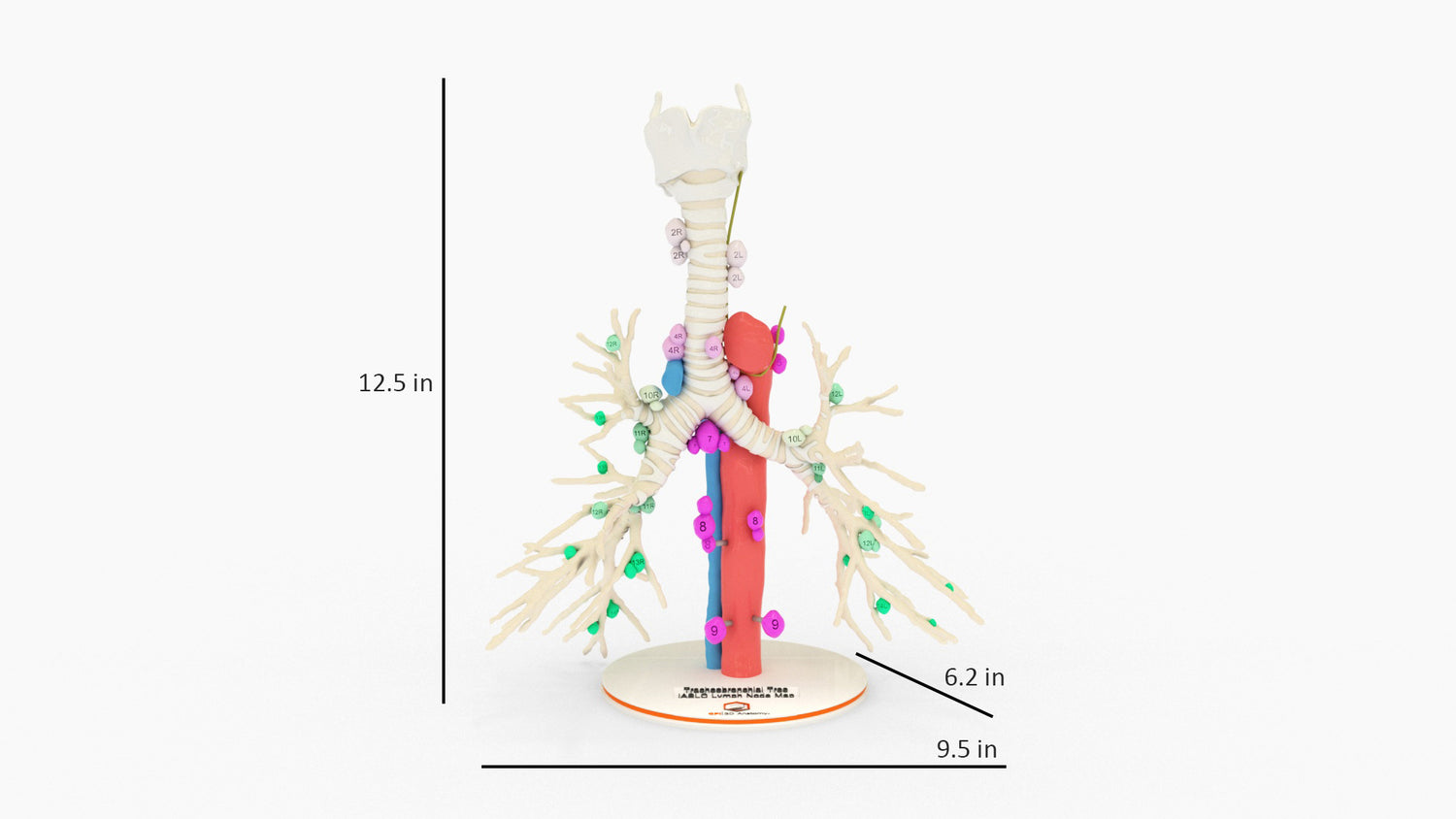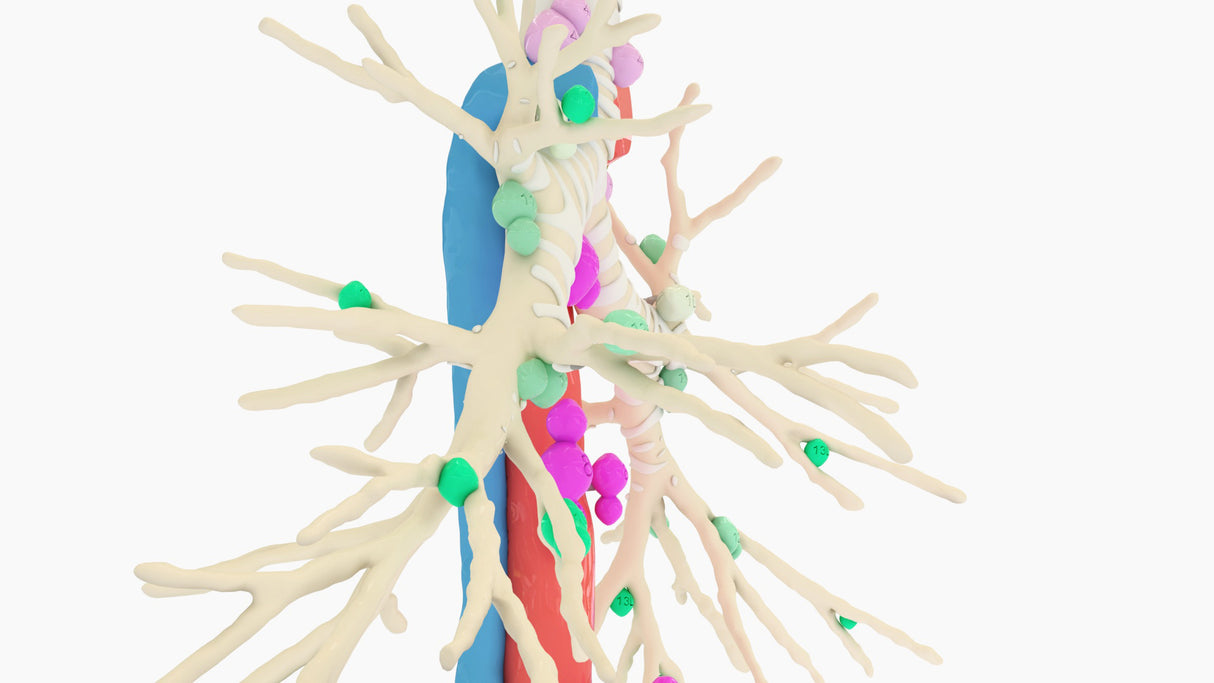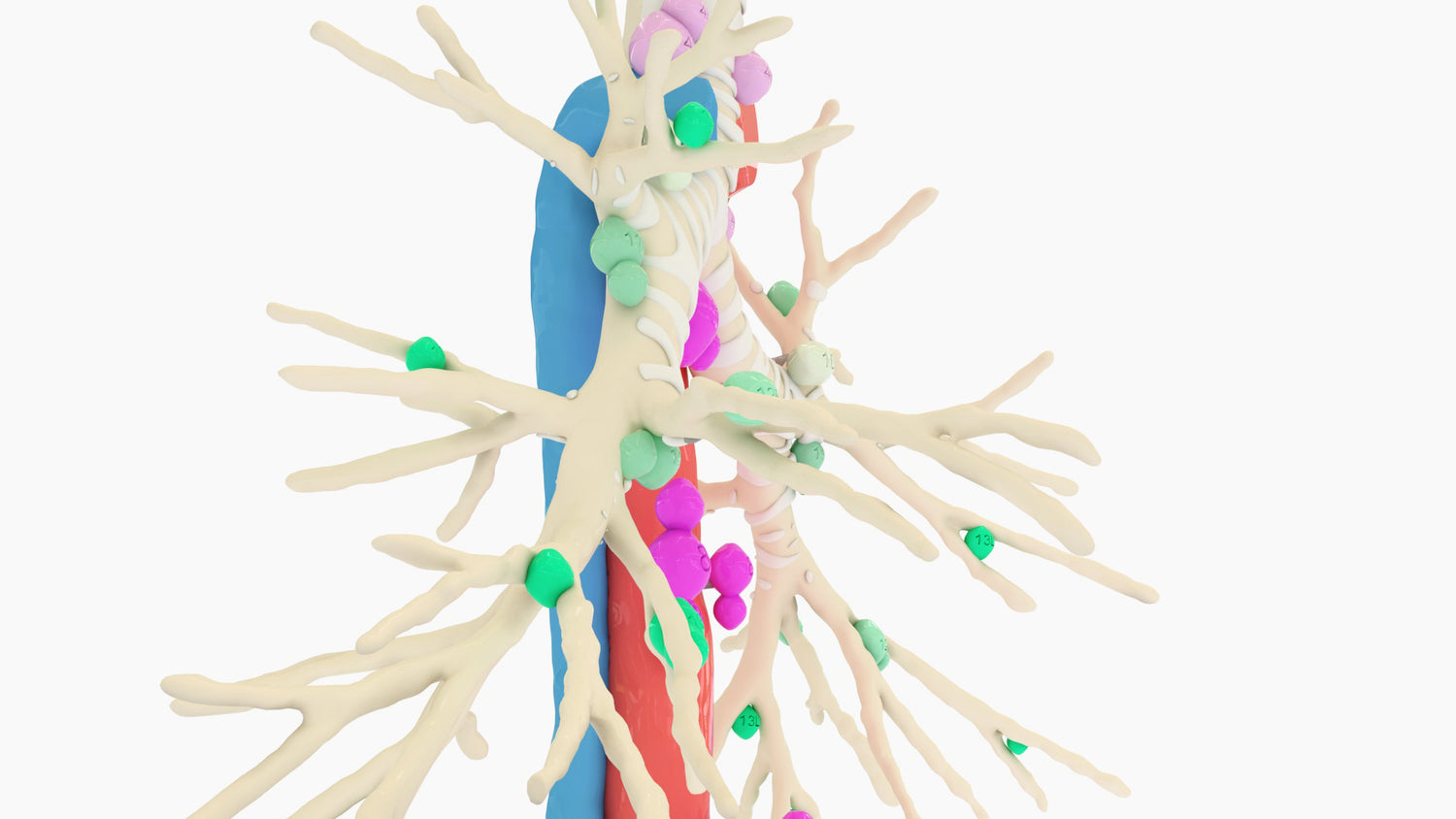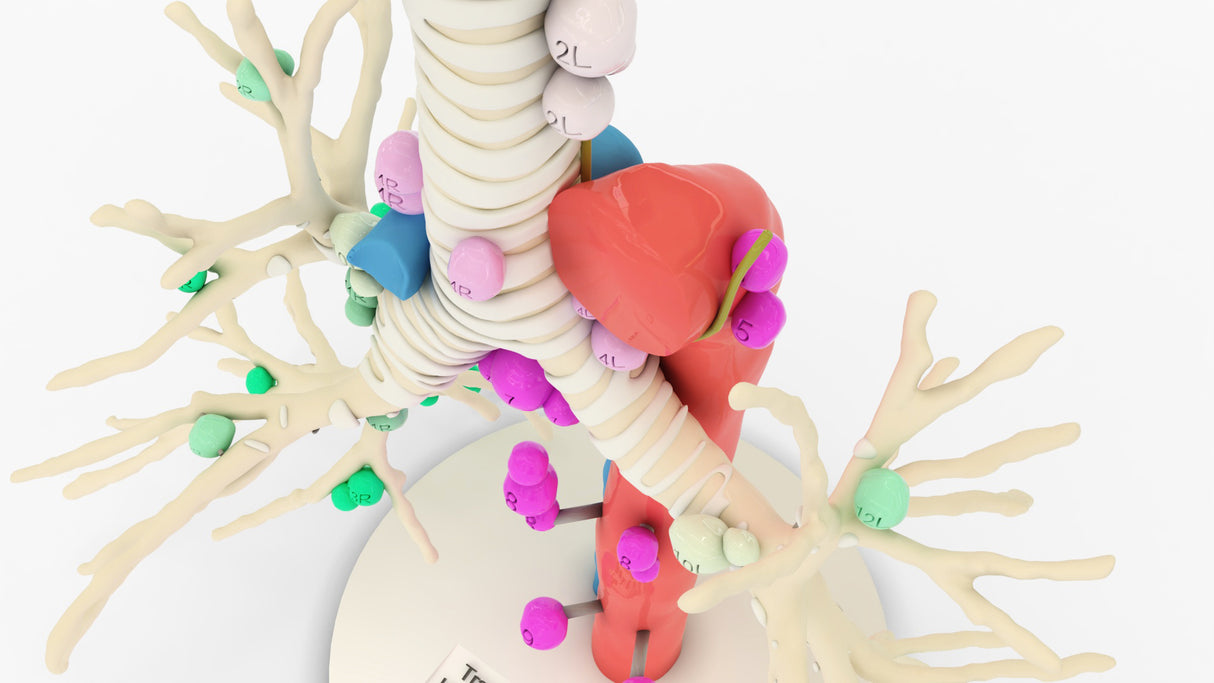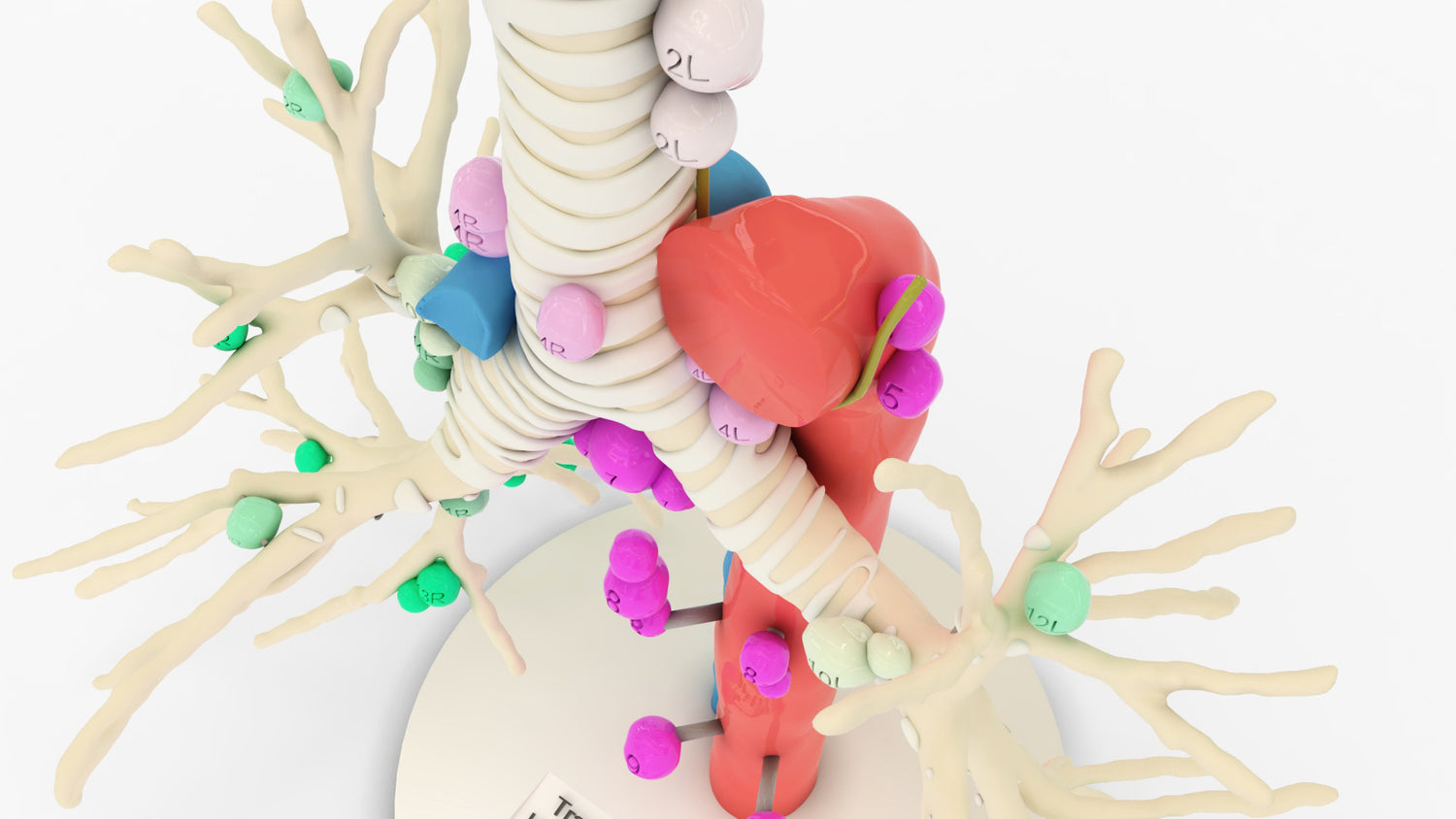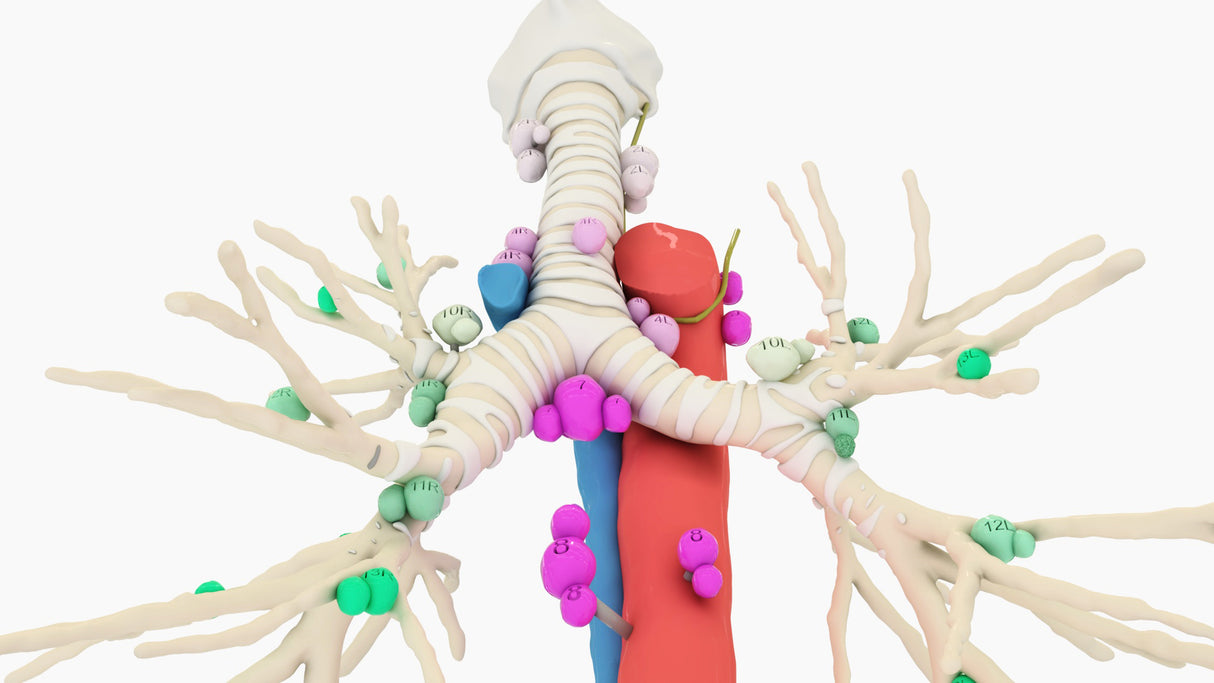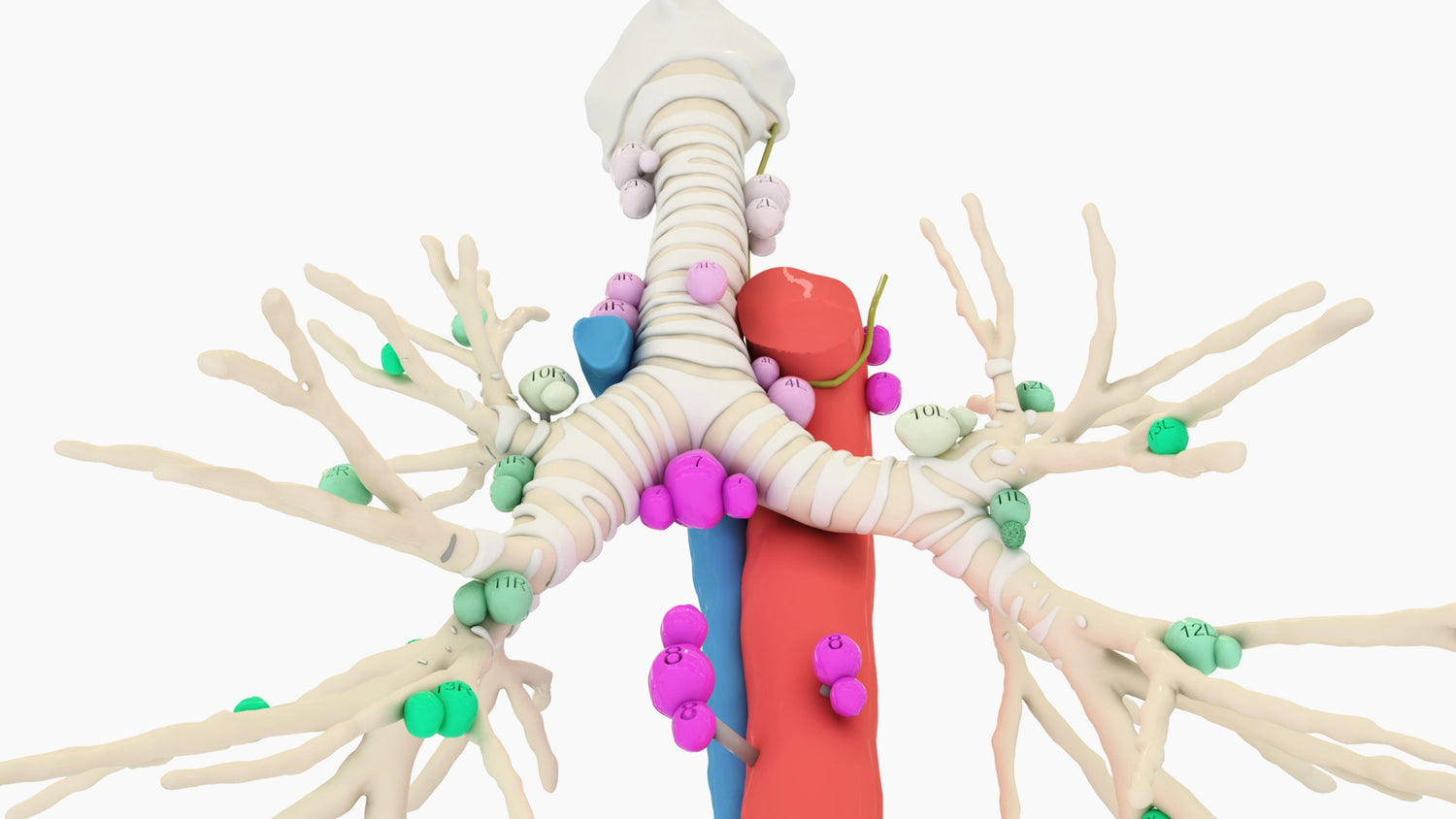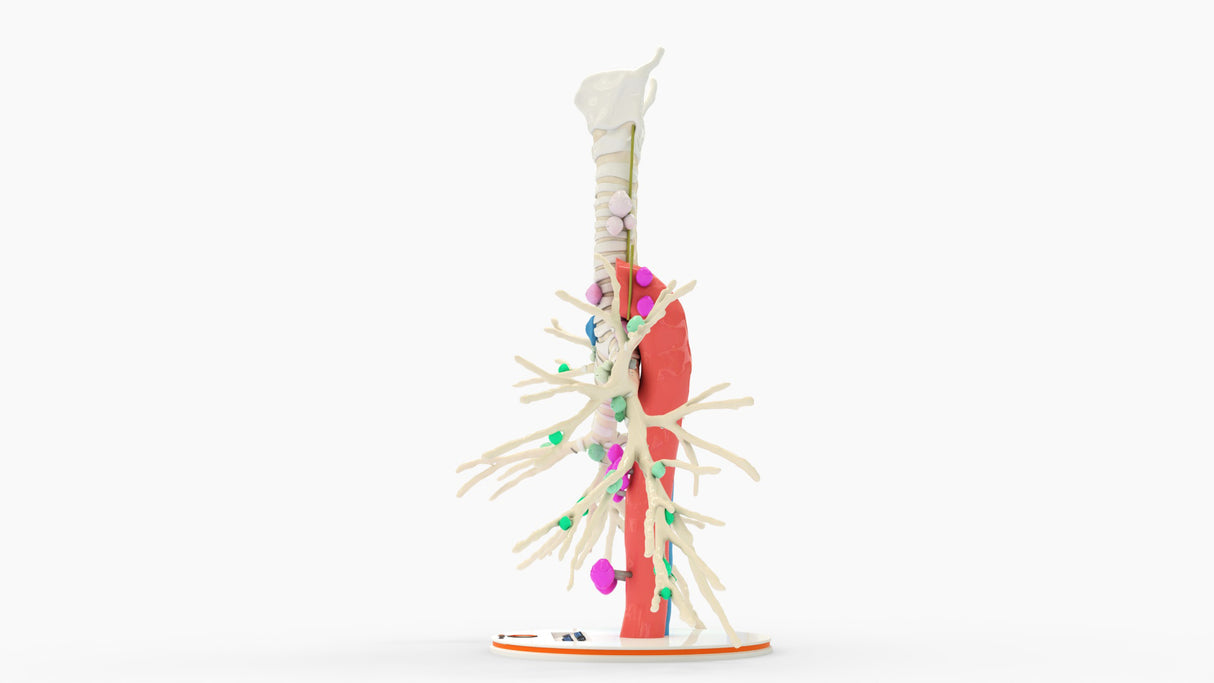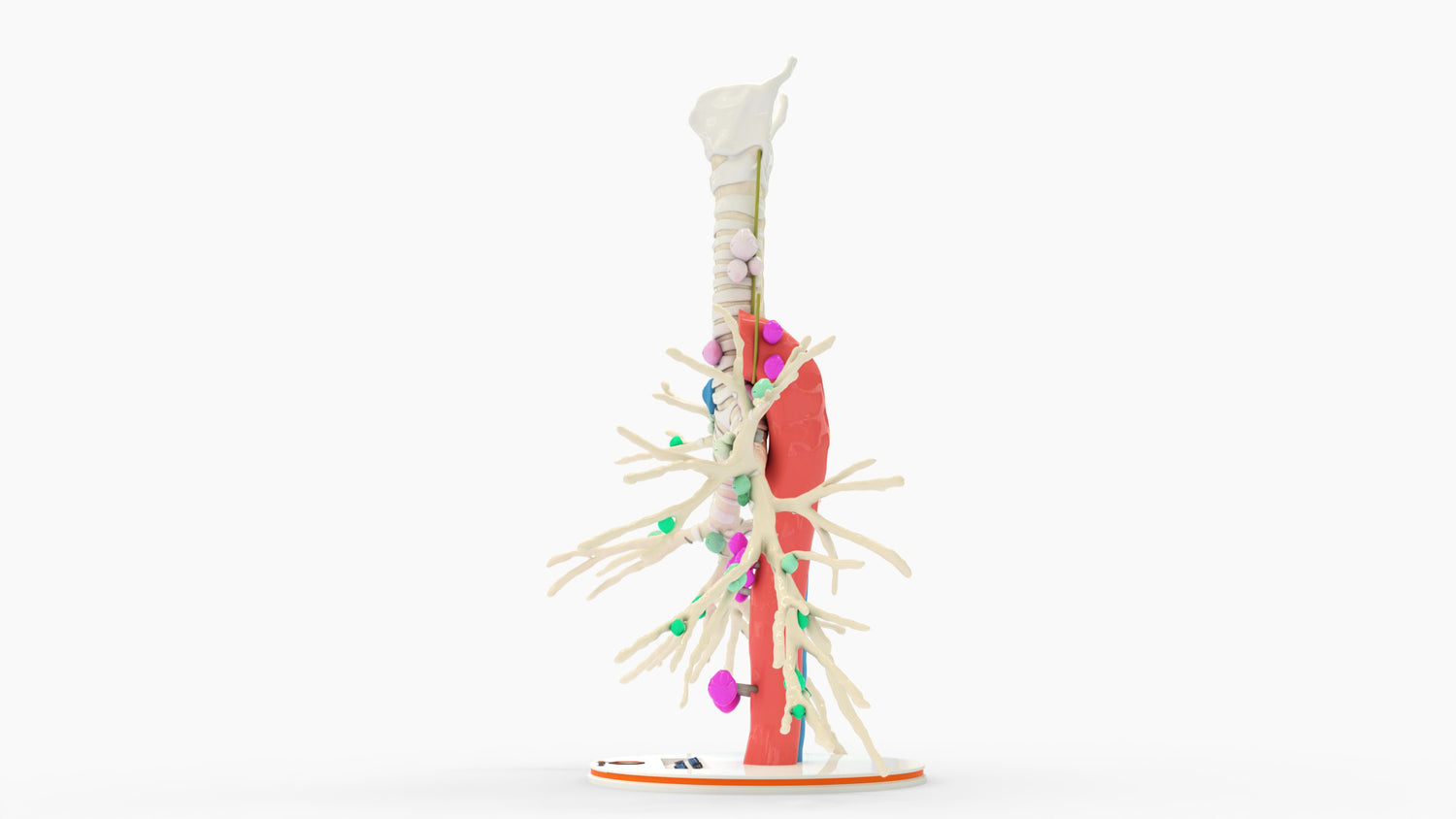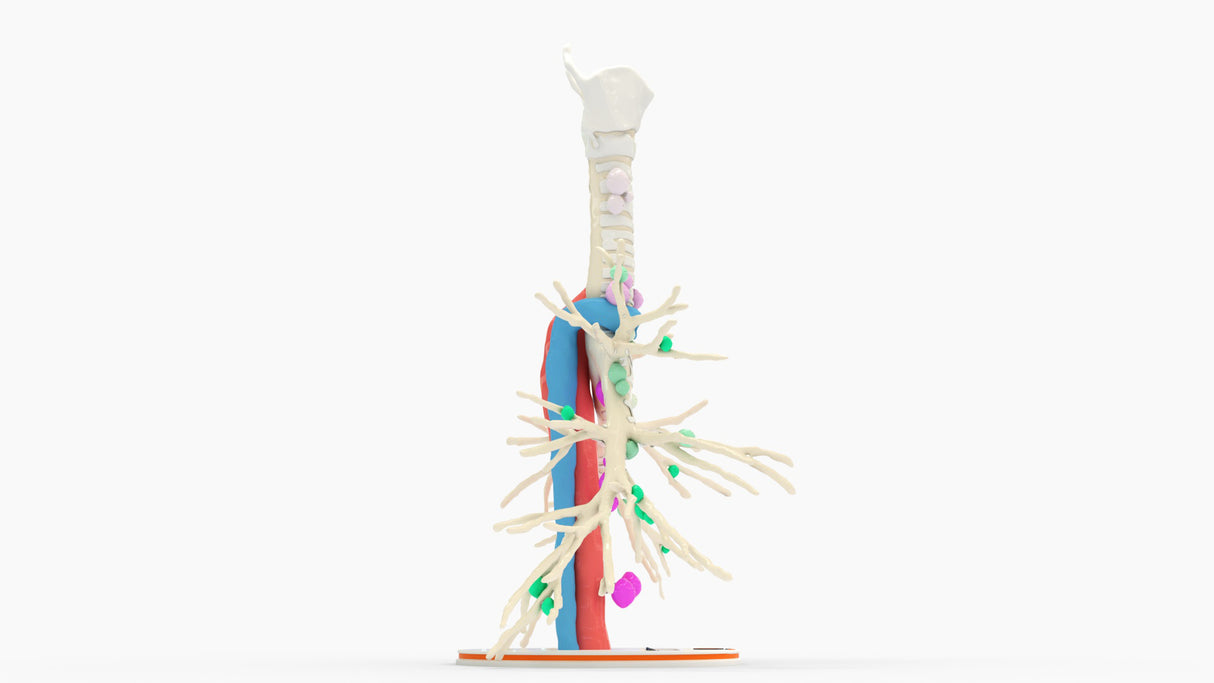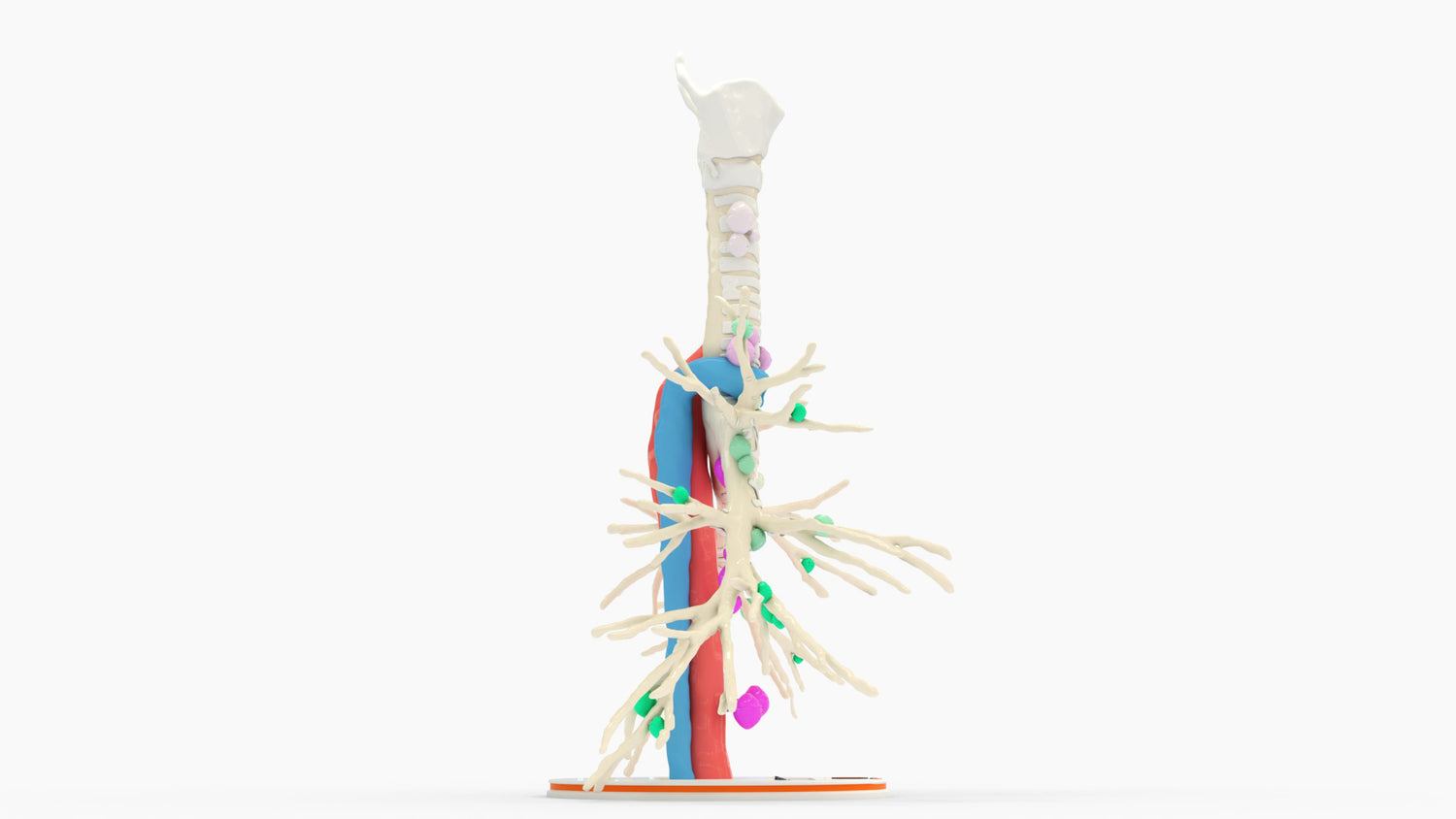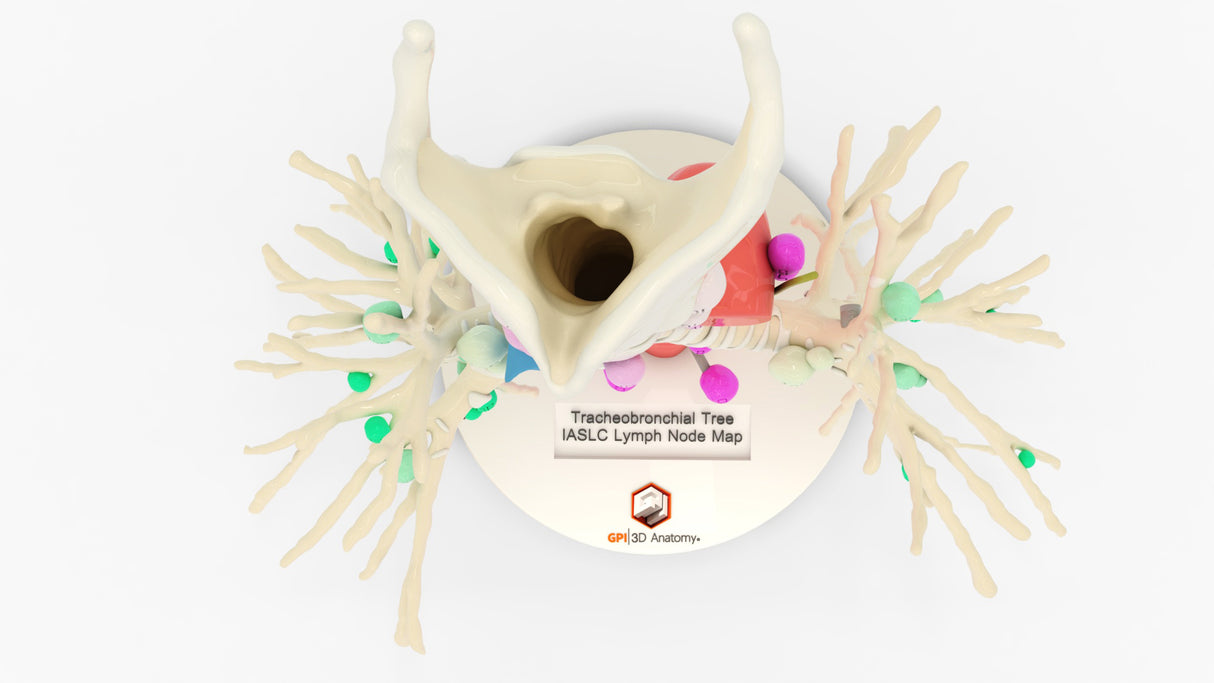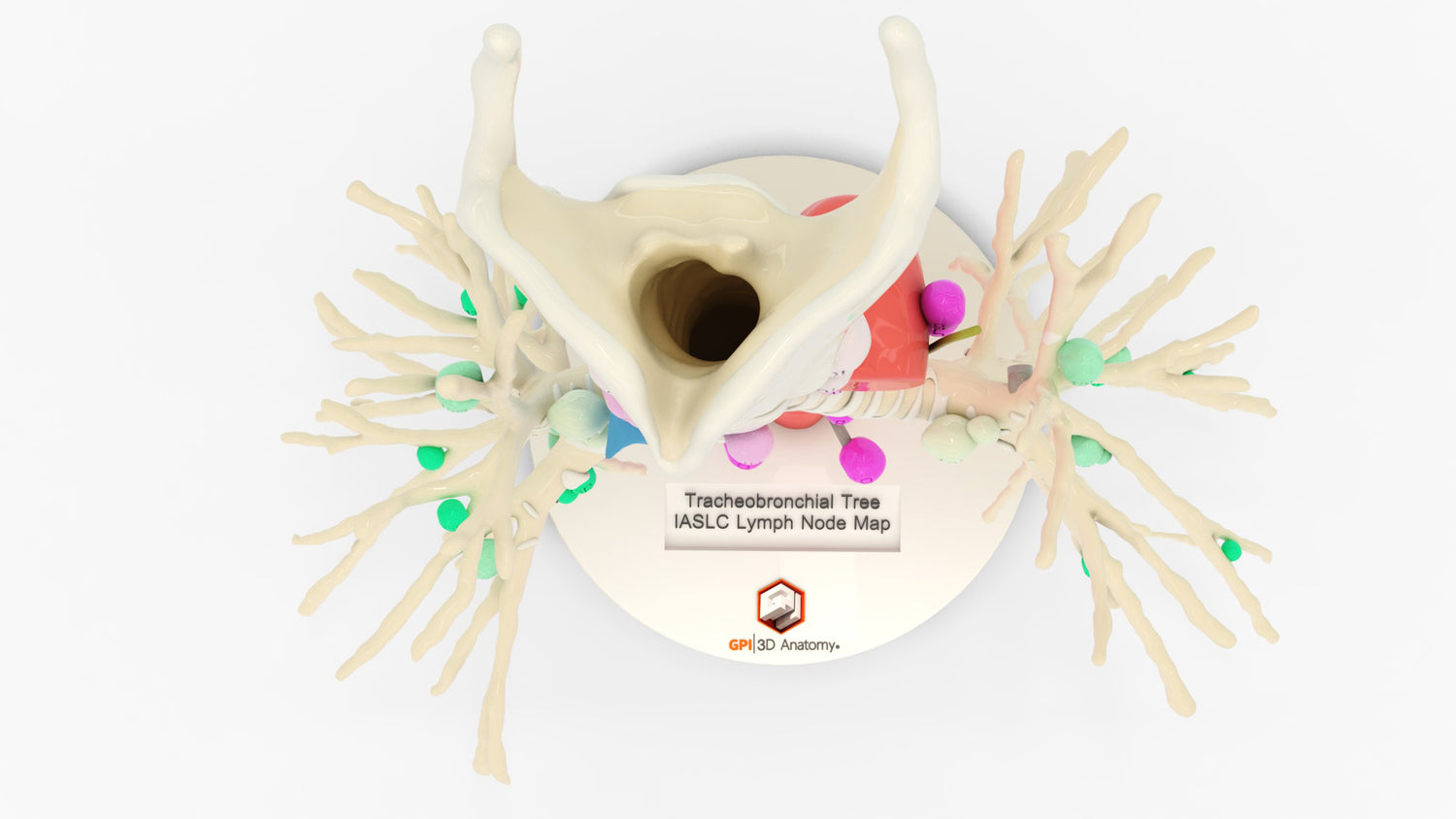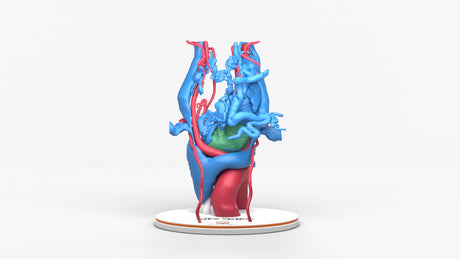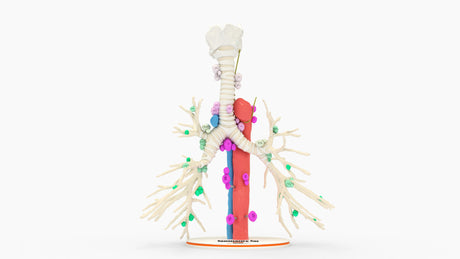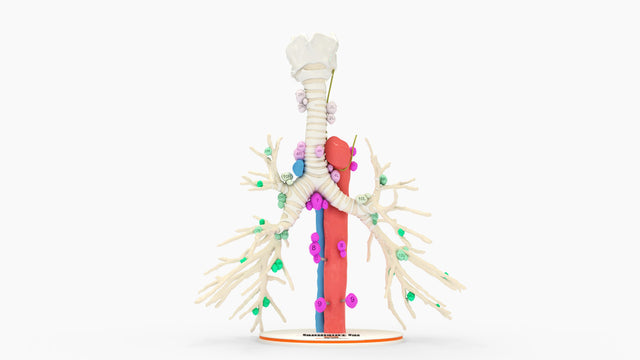Tracheobronchial Tree With Lymph Nodes - Male, 28 Years
Couldn't load pickup availability
Tracheobronchial tree showing the system of airways that enable gas exchange in the lungs. Includes trachea, right and left main bronchi, lobar bronchi, and segmental bronchi. The lungs include the right upper, middle, and lower lobes, and the left upper and lower lobes. Includes labeled lymph node levels for anatomical reference for surgical training of thoracic surgeons.
Airway surgery is often indicated in the management of benign or malignant pathological processes of the tracheobronchial tree.
Designed using MRI and CT imaging scans and the latest 3D printing technologies, in collaboration with Mayo Clinic.
About the Condition
Benefits of 3D Printing
3D-printed anatomy models offer a variety of advantages for surgical planning, patient education and medical research, including:
∙ Greater accuracy and detail than traditional anatomical models. 3D-printed models are created from digital scans of a patient's anatomy, which ensures that they are as close as possible to an exact replica of real human anatomy.
∙ More versatility than traditional anatomical models. 3D-printed models can be customized to meet your specific needs, whether planning a complex surgical procedure, training with real patient data or facilitating personalized patient communication.
Not limited to standard manufacturing, 3DP provides the best opportunity to produce accurate models in natural organic shapes, sizes, and colors; creating the best representation of real human anatomy.

